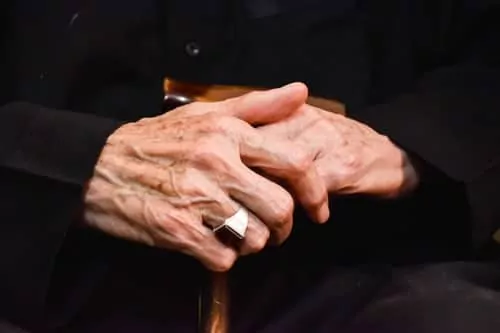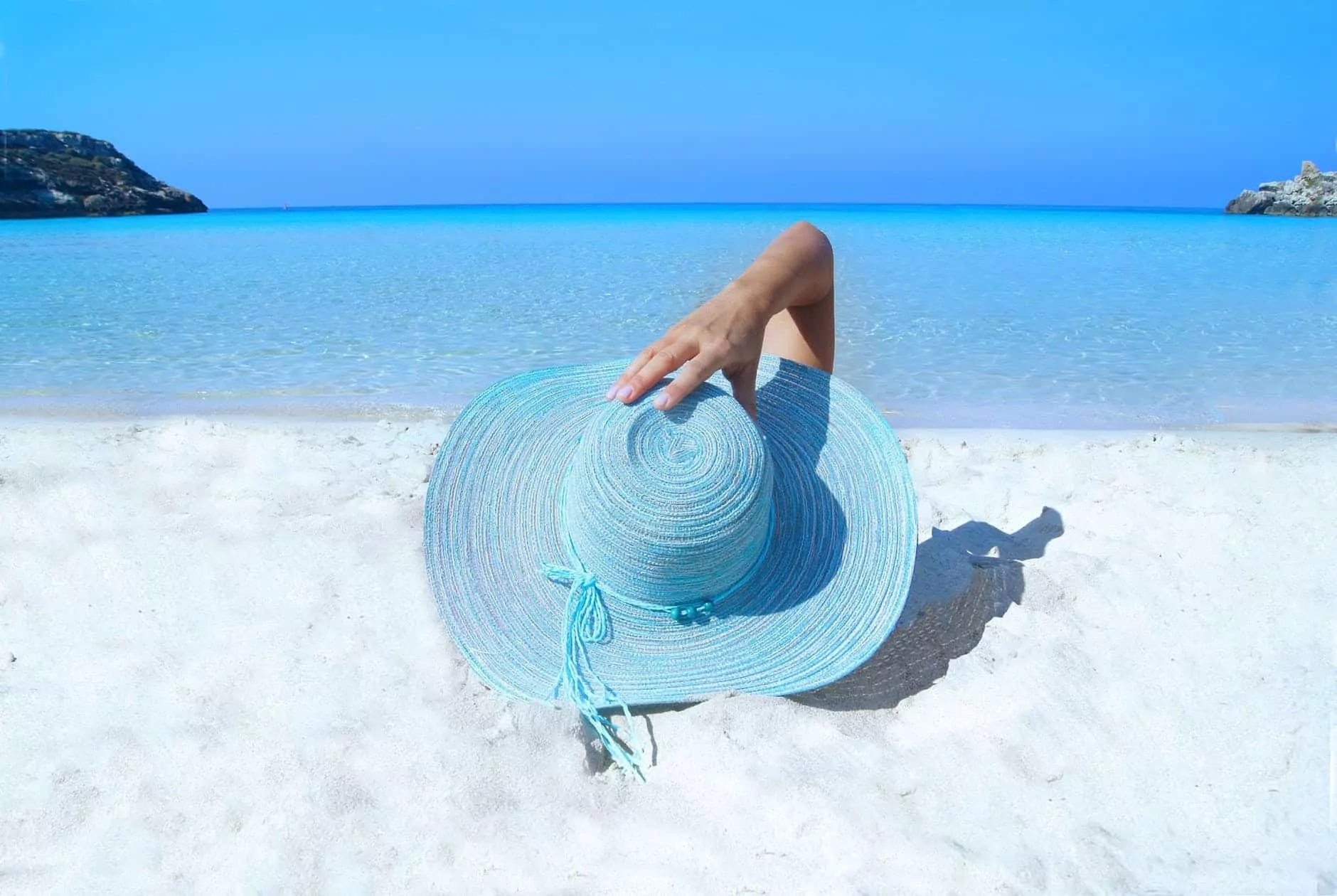Author: Dr. Fayne Frey, Board Certified Dermatologist
originally posted: 7.1.2021
updated 6.2.2021
Concerned about age spots?
Does an unsettling image of your mother or grandmother pop into your mind when someone mentions age spots? Perhaps you’ve noticed a small brown pigmented spot on your own cheek or on the back of your hand. After a lifetime of being exposed to the sun, you’re bound to find one somewhere on your body.
In my dermatology practice, patients frequently express concern about the appearance of age spots. They associate those little dark areas, also referred to as liver spots, with “old people”. Women in particular, but also men, are often embarrassed and ashamed about these small imperfections on their skin. I get it – we live in a society obsessed with youth and perfection. It’s no wonder people feel inadequate. At some point during these appointments, I encourage my patients to appreciate that aging is a privilege, one that is not afforded to everyone.
What exactly are age spots?
The little known truth about age spots is that they are not actually caused by age, or by the liver for that matter. These annoying dark spots are more appropriately called sun spots.
These pigmented spots are known in the medical community as solar lentigos. They are small harmless discolorations found, almost exclusively, on sun-exposed skin. These spots generally start to appear once people hit 40 and tend to become more numerous with repeated sun exposure.
Solar lentigos are well-defined, flat, slightly pigmented round or oval areas found primarily on the face, shoulders, tops of the feet and backs of the hands. Sometimes they have a fine scale. Their size can range from as small as a freckle to as large as half dollar. The discoloration represents an increase in pigment formation due to frequent and prolonged exposure to the sun’s ultraviolet rays. In addition to the sun, tanning beds and lamps contribute to the formation of these brownish areas. Lighter-skinned individuals are at higher risk than those with a darker skin color.

Are age spots dangerous?
Age spots are not dangerous in any way, so there is no medical reason to get rid of them. In fact, they are symptomless, other than the angst they cause in people who fear these aesthetically undesirable spots make them appear older.
Although age spots are benign, they can mimic more harmful skin growths. It’s important to pay attention to any changes in color, size or shape of the spot, or the development of symptoms such as redness, itchiness, or tenderness. These changes may indicate a more serious condition and should be looked at by a medical professional.
Age spot treatments
One of the most frequent questions I hear from my patients is, “How do I get rid of age spots?”. The good news is that many treatment options are available to remove and lighten age spots. However, no treatment is perfect and some treatments may even cause the spot to heal darker, particularly in darker skinned people.
Treatments: pros and cons
Bleaching creams:
Prescription bleaching creams containing hydroquinone applied to the area in conjunction with retinoid creams and topical steroids may fade the appearance of age spots. Note: Skin reactions causing redness and itching from the hydroquinone or retinoid cream are not unusual.
Laser and light therapy:
Certain lasers that target and destroy the pigment producing cells can effectively fade age spots. Several sessions are usually necessary to obtain the desired results.
Cryotherapy (freezing):
A freezing agent, like liquid nitrogen, applied to an age spot with a cotton-tipped applicator, can destroy the pigment in age spots. This may lead to temporary skin irritation or a more permanent scar or loss of pigment in the treated area.
Chemical peels:
Various chemical peel agents, primarily acids like trichloracetic acid (TCA), can lighten age spots when applied. As the skin is peeled away, pigment from the age spot is removed with the hopes of newer lighter skin below. The development of a darker spot in the area of treatment is a known risk factor, especially in darker skinned individuals.
Over-the-counter treatments:
OTC fade creams containing hydroquinone are available on pharmacy shelves and in local drug stores. They may improve the appearance of age spots if used regularly with a comprehensive sun protection program. Other ingredients that are found in OTC fade creams include kojic acid and glycolic acid. Although these products may temporarily improve the appearance of age spots, complete removal of them is unlikely. Some of these products may cause skin irritation, especially those containing hydroquinone.
Home remedies:
Although no definitive studies exist to prove the effectiveness of home remedies, many do-it-yourselfers use items found in the kitchen to attempt to remove or lighten age spots: Examples include lemon juice, apple cider vinegar, potato, buttermilk, honey and orange peels. Proceed with caution, however, as some of these common products can cause a reaction.
Prevention
No adage is more suitable for the prevention of age spots than “an ounce of prevention is worth a pound of cure”. My recommendations:
- Avoid direct sun exposure between 10 a.m. and 3 p.m. when the sun’s rays are most intense.
- Apply sunscreen daily, liberally and reapply it often to help prevent age spots from developing.
- Wear protective clothing designed to provide sun protection.
If you already have age spots, avoid the sun and wear sunscreen in addition to your chosen treatment to prevent more dark areas from forming. Another benefit of sunscreen; studies show frequent application improves the appearance of facial skin, and even lighten age spots
The bottom line:
Wear sunscreen and reapply it often! It might be a pain now, but as you age you will appreciate that you did so. And…If you are serious about your skin care, I also recommend you strive to live a healthy lifestyle in general. Eat a nutritious diet, maintain a healthy weight, exercise regularly, get adequate amounts of sleep and moisturize your skin regularly. Skin health parallels body health, and unfortunately, there are no shortcuts. Above all, realize that aging is a process, not a battle. Imperfections on your skin may not be aesthetically pleasing to you, but they do not define you. Be kind to yourself.

Fayne Frey, M.D.
Fayne Frey, M.D., is a board-certified clinical and surgical dermatologist practicing in West Nyack, New York, where she specializes in the diagnosis and treatment of skin cancer. She is a nationally recognized expert in the effectiveness and formulation of over-the-counter skincare products, and, as a speaker, has captivated audiences with her wry observations regarding the skincare industry. She has consulted for numerous media outlets, including NBC, USA Today, and, the Huffington Post, and has shared her expertise on both cable and major TV outlets. Dr. Frey is the Founder of FryFace.com, an educational skincare information and product selection service website that clarifies and simplifies the overwhelming choice of effective, safe and affordable products encountered in the skincare aisles. Dr. Frey is a fellow of both the American Academy of Dermatology and the American Society for Dermatologic Surgery.










